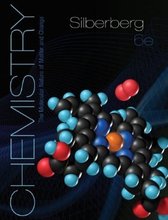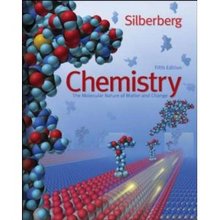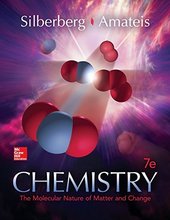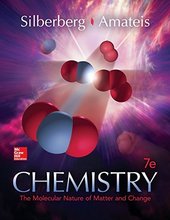Chemistry The Molecular Nature of Matter Jespersen 7th Edition Test Bank
$35.00 Original price was: $35.00.$26.50Current price is: $26.50.
Chemistry The Molecular Nature of Matter Jespersen 7th Edition Test Bank
This is completed downloadable of Chemistry The Molecular Nature of Matter Jespersen 7th Edition Test Bank
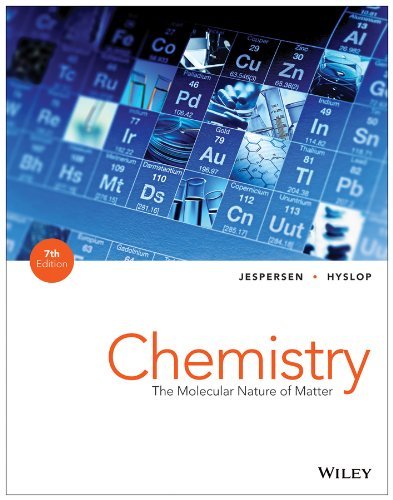
Product Details:
- ISBN-10 : 1119456452
- ISBN-13 : 978-1119456452
- Author: Alison Hyslop (Author), Neil D. Jespersen (Author), James E. Brady (Contributor)
Students who use Chemistry: The Molecular Nature of Matter, Seventh Edition as a text are suppled with the instruction, practice and assessment they need to progress in a general chemistry course. This text supports students’ efforts to analyze, solve problems and master the concepts related to chemical phenomena. The edition features updates to key concepts and additional multi-concept problems and examples. The author also focuses on the relationship between structure at the submicroscopic molecular level and the observable macroscopic properties of matter. For readers, this textbook serves as a concise and easily understood chemistry resource.
Table of Content:
Chapter 2
Elements, Compounds, and the Periodic Table
Multiple Choice Questions
Section 2.1
Difficulty Level: easy
1. All of the following are alkali metals except
a. Sr
b. Na
c. Fr
d. Cs
e. Rb
Answer: a
Section 2.1
Difficulty Level: easy
2. Which element is a halogen?
a. Te
b. O
c. Se
d. Uuh
e. I
Answer: e
Section 2.1
Difficulty Level: easy
3. Each statement accurately describes the noble gases except for which one?
a. They were once known as the inert gases.
b. He, Ne, Ar, Kr, Xe, Rn, and Uuo are part of the group.
c. Their heavier elements do react with other elements.
d. They belong to group VIIIA (or 18).
e. They contain at least one metalloid.
Answer: e
?
Section 2.1
Difficulty Level: easy
4. The transition metals take up ___ periods of the periodic table.
a. 2
b. 3
c. 4
d. 1
e. 5
Answer: c
Section 2.1
Difficulty Level: easy
5. In which family of elements does Ca belong?
a. alkali metals
b. alkaline earth metals
c. halogens
d. noble gases
e. transition metals
Answer: b
Section 2.1
Difficulty Level: easy
6. The elements in a column of the periodic table are known as
a. metalloids.
b. a period.
c. noble gases.
d. a group.
e. nonmetals.
Answer: d
?
Section 2.1
Difficulty Level: easy
7. The elements in a row of the periodic table are known as
a. metalloids.
b. a period.
c. noble gases.
d. a group.
e. nonmetals.
Answer: b
Section 2.1
Difficulty Level: easy
8. Which of these elements have the most chemical properties that are similar to sulfur?
a. calcium
b. oxygen
c. phosphorus
d. bromine
e. nitrogen
Answer: b
Section 2.1
Difficulty Level: easy
9. Which of these elements have the most chemical properties that are similar to magnesium?
a. calcium
b. sodium
c. aluminum
d. iron
e. cesium
Answer: a
?
Section 2.1
Difficulty Level: easy
10. Which of these elements have the most chemical properties that are similar to silicon?
a. aluminum
b. phosphorus
c. nitrogen
d. silver
e. germanium
Answer: e
Section 2.2
Difficulty Level: easy
11. Some elements have properties that lie between true metals and true nonmetals. These elements are known as:
a. metals
b. nonmetals
c. halogens
d. alkaline earth metals
e. metalloids
Answer: e
Section 2.2
Difficulty Level: easy
12. Which metal is a liquid at room temperature (about 25oC)?
a. hydrogen
b. bromine
c. tungsten
d. mercury
e. chromium
Answer: d
?
Section 2.2
Difficulty Level: easy
13. Which compound is a gas at room temperature (about 25oC)?
a. hydrogen
b. bromine
c. tungsten
d. mercury
e. chromium
Answer: a
Section 2.2
Difficulty Level: easy
14. Diamond and graphite are different forms of which element?
a. sodium
b. carbon
c. mercury
d. gold
e. calcium
Answer: b
Section 2.2
Difficulty Level: medium
15. Which of the following is not a property of metals?
a. They have a shine called a metallic luster.
b. They are good conductors of electricity.
c. They are generally poor conductors of heat.
d. They can be rolled into thin sheets.
e. Some metals are quite hard, while some are soft.
Answer: c
?
Section 2.2
Difficulty Level: medium
16. Classify the following three elements as a metal, metalloid, or nonmetal: P, Si, Al.
a. P, metal; Si, metalloid; Al, nonmetal
b. P, metal; Al, metalloid; Si, nonmetal
c. Al, metal; P, metalloid; Si, nonmetal
d. Si, metal; Al, metalloid; P, nonmetal
e. Al, metal; Si, metalloid; P, nonmetal
Answer: e
Section 2.2
Difficulty Level: medium
17. Classify the following three elements as a metal, metalloid, or nonmetal: Ti, S, Sb.
a. Ti, metal; S, metalloid; Sb, nonmetal
b. Sb, metal; S, metalloid; Ti, nonmetal
c. S, metal; Sb, metalloid; Ti, nonmetal
d. Sb, metal; Ti, metalloid; S, nonmetal
e. Ti, metal; Sb, metalloid; S, nonmetal
Answer: e
Section 2.2
Difficulty Level: easy
18. Which of these element types are usually tend to be poor conductors of heat and electricity?
a. metals
b. metalloids
c. nonmetals
d. alkaline earth metals
e. alkali metals
Answer: c
?
Section 2.3
Difficulty Level: easy
19. Which of the following is used to represent elemental bromine?
a. Be
b. B
c. 2Br
d. Br2
e. Br
Answer: d
Section 2.3
Difficulty Level: medium
20. Which combination is used to represent molecular hydrogen, and atomic hydrogen, respectively?
a. H2, H
b. He, H-
c. H, H
d. 2H, H+
e. Hy, H
Answer: a
Section 2.3
Difficulty Level: medium
21. Which compound exists as a diatomic molecule in the free state?
a. magnesium
b. managanese
c. silicon
d. arsenic
e. chlorine
Answer: e
?
Section 2.3
Difficulty Level: medium
22. Which compound exists as a diatomic molecule in the free state?
a. C
b. N
c. Ga
d. Ge
e. P
Answer: b
Section 2.3
Difficulty Level: medium
23. Which compound exists as a diatomic molecule in the free state?
a. helium
b. fluorine
c. neon
d. argon
e. xenon
Answer: b
Section 2.3
Difficulty Level: medium
24. Which compound is correctly represented as a hydrate?
a. C2H5OH2+
b. MgSO4•7H2O
c. FeH2(CO)4
d. O2S(OH)2
e. [CrCl(H2O)5]Cl
Answer: b
Section 2.3
Difficulty Level: medium
25. Which compound is correctly represented as a hydrate?
a. CuSO4•5H2O
b. HC2H3O2
c. O2S(OH)2
d. H2S2O7
e. C6(H2O)6
Answer: a
Section 2.4
Difficulty Level: medium
26. How many oxygen atoms are in one molecule of Mg(NO3)2?
a. 1
b. 2
c. 3
d. 5
e. 6
Answer: e
Section 2.4
Difficulty Level: medium
27. How many oxygen atoms are in one formula unit of Mg(NO3)2?
a. 1
b. 2
c. 3
d. 5
e. 6
Answer: e
Section 2.4
Difficulty Level: easy
28. How many hydrogen atoms are in one molecule of HC2H3O2?
a. 1
b. 2
c. 3
d. 4
e. 5
Answer: d
Section 2.4
Difficulty Level: easy
29. How many carbon atoms are in one molecule of C6H6?
a. 1
b. 2
c. 4
d. 6
e. 12
Answer: d
People Also Search:
the molecular nature of matter jespersen 7th edition
the molecular nature of matter jespersen
the molecular nature of matter jespersen 7th edition download scribd
the molecular nature of matter jespersen 7th edition testbank download pdf
You may also like…
Test Bank
Test Bank for Chemistry: The Molecular Nature of Matter, 7th Edition Neil D. Jespersen Alison Hyslop
Solution Manual
Solution Manual
Chemistry The Molecular Nature of Matter and Change Silberberg 7th Edition Solutions Manual




